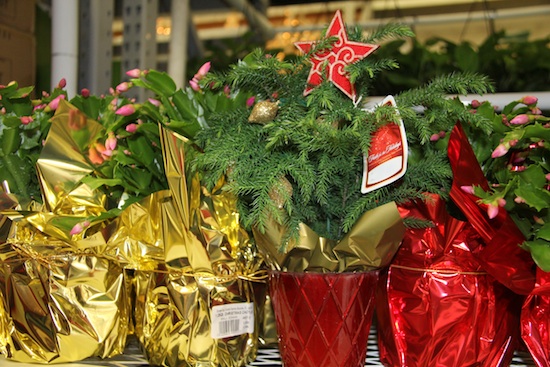Container-grown or balled-and-burlapped Christmas trees can be planted as landscape trees after the holidays. This way of enjoying a Christmas tree is practical in Georgia, where the mild December or early January weather is ideal for tree planting. With care and planning, your Christmas tree will serve as a living memory for many years.
There are a number of things to consider when bringing a rooted Christmas tree indoors. Rooted trees can stay inside for only a brief period, no more than seven to 10 days. Longer periods indoors can stress the tree due to the interior environment: warm temperatures, low light levels and low humidity.
Before you buy a tree to use indoors over the holidays, make sure it will fit in your landscape. Most evergreens that are used as Christmas trees will eventually reach mature heights of 40 to 60 feet. Select a species that is suited to your climate zone. The tree will be inside for a very short time compared to the length of time it will live in your landscape.
Some evergreens that will thrive throughout northern Georgia include the giant arborvitae (Thuja plicata), Virginia pine, eastern redcedar and other junipers, and varieties of Arizona cypress such as ‘Clemson Greenspire’ and ‘Carolina Sapphire.’ Some interesting choices that will grow throughout the state include the Japanese cedar (Cryptomeria japonica), deodar cedar, Atlas cedar and Hinoki false cypress (Chamaecyparis obtusa). White pine, eastern hemlock and spruces will also grow in upper Piedmont areas if provided with some shade during the long, hot summers.
Living trees can be very heavy. Container-grown trees are usually lighter and easier to handle than balled-and-burlapped trees.
By the time you prepare to move the tree outdoors, it will be even heavier, since it is necessary to constantly keep the roots moist. Be sure you can move this weight without damaging either the tree or yourself. Never carry a tree by grabbing the stems or main trunks — the weight of the tree can actually cause the root plate to crack and the tree will die. Only carry trees by lifting the root ball or container.
When bringing the tree indoors, place it in as cool of a location as possible, but make sure it receives as much natural light as possible. Keep it away from heating vents, fireplaces and other heat sources. Decorate it with a limited number of miniature tree lights that can further dehydrate the tree.
Place the root ball or container in a water-holding tub. Fill the bottom two inches of the tub with gravel and place the root ball or container on the gravel. This will keep the tree from sitting directly in water. Keep the root ball constantly and evenly moist but not flooded. A handy technique for watering trees while indoors is to place crushed ice over the top of the root ball.
Plant your tree as soon as possible after Christmas is over. Do not wait until spring. If the work of bringing a live tree in and out of the house seems excessive, consider planting the tree directly outside and decorating it there. This can become an enjoyable occasion that is less stressful on both you and the tree.
If you wait until after the holidays, you might find some deep discounts on trees at your local garden center.
Select a planting site that has well-drained soil, full sun and is appropriate for the tree’s size once fully grown. Plant the tree in a hole that is the same depth, but at least twice, preferably three times, as wide as the root ball.
Be sure not to plant the tree too deeply — the root flare at the base of the stem should be slightly above ground level. Remove burlap and wire baskets completely, as they can cause root girdling. Remove containers from container-grown trees, and cut and loosen any encircling roots.
Fill the hole around the freshly set tree with the loosened, native soil left from the planting hole. Do not add any topsoil amendments or compost. Backfill around the root ball in stages by gently firming in each layer of soil.
Water the area well to settle the soil and eliminate air pockets. Apply 2 to 3 inches of mulch on top of the root ball. It is not necessary to add fertilizer until after the first growing season.
For more information, see the University of Georgia Cooperative Extension publication “Soil Preparation and Planting Procedures for Ornamental Plants in the Landscape” online at t.uga.edu/1YV.








